I'm Ruth Ramos from Mexico. I work for Greenpeace International as a campaigner in the Protect the Oceans global team, based in The Netherlands.
This past February, I travelled to Panama where I met an international team of Greenpeace colleagues and scientists from Ecuador. Together, we embarked on a journey to the Galápagos Marine Reserve on the Greenpeace ship, the Arctic Sunrise. Working from our ships is always a special experience, and most of us had never been to the Galápagos Islands before.
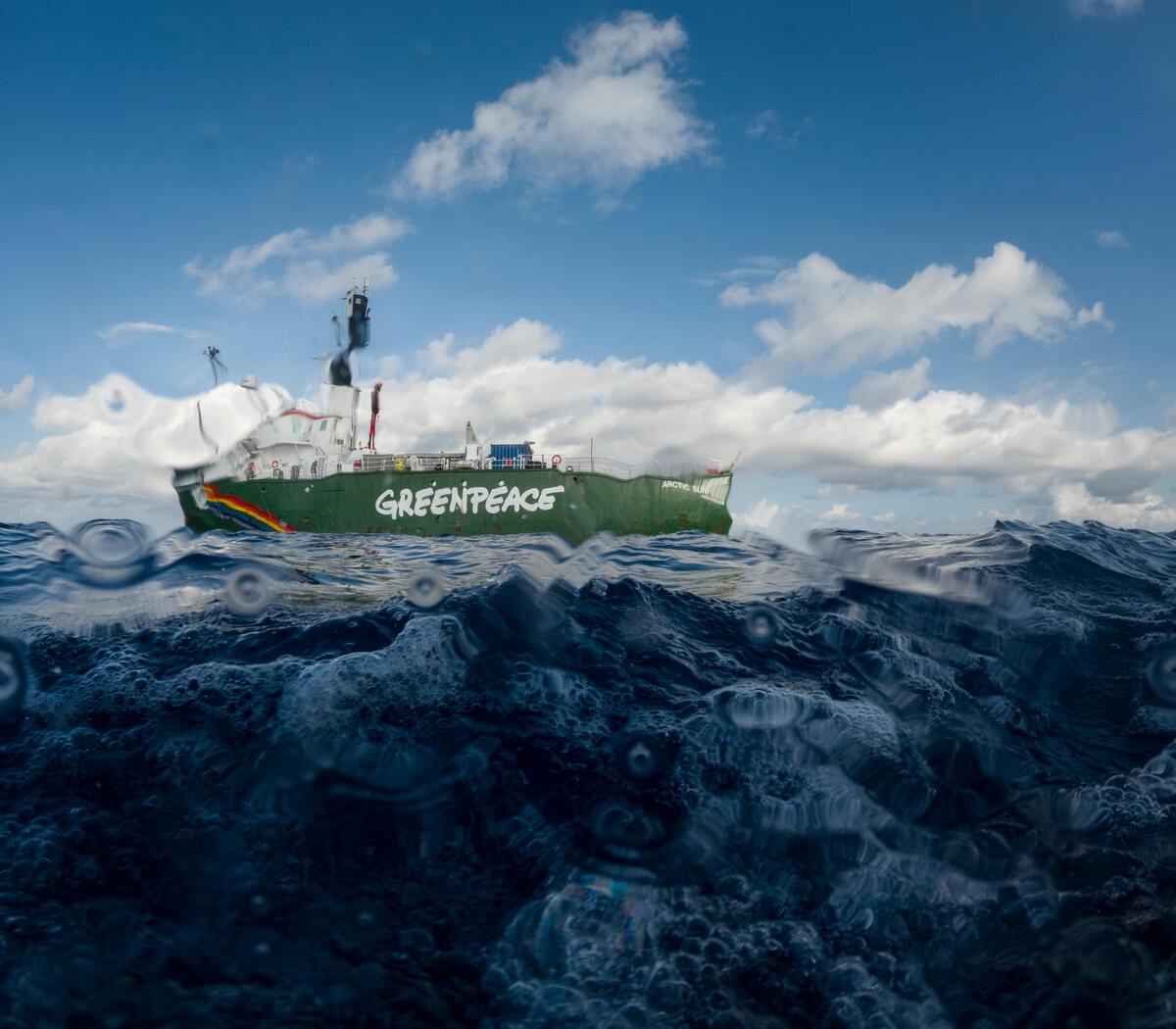
The Galápagos Islands are located in the Eastern Tropical Pacific Ocean, a rich area that forms an underwater superhighway for migratory species, like whales, rays, sea turtles and sharks. This area extends through the national jurisdictions of Costa Rica, Panama, Colombia and Ecuador, which in 2004 created the Eastern Tropical Pacific Marine Corridor (CMAR); an intergovernmental initiative that promotes the conservation and sustainable use of biological diversity in this corridor.
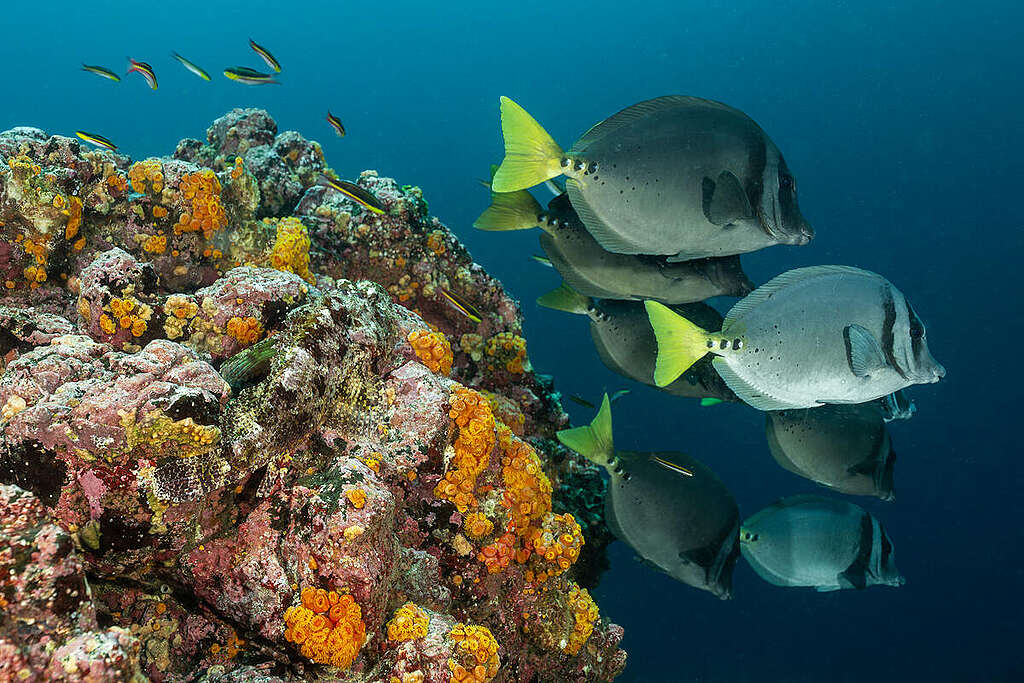
However, one section of this marine corridor remains unprotected as it is on the High Seas, outside the jurisdiction of any country. Greenpeace sailed there to document the presence of marine life around two seamounts, to compare the rich biodiversity in the Galápagos Marine Reserve to the surrounding unprotected High Seas, showcase the benefits of strong marine protection and to support the urgent ratification of the historic Global Ocean Treaty. The treaty aims to ensure the conservation and sustainable use of marine biological diversity in areas beyond national jurisdiction (i.e. the high seas). It can be used to protect 30% of the oceans by 2030 (30×30) through establishing networks of Marine Protected Areas (MPAs) on the High Seas.
Part of the scientific research in this area included working with Baited Remote Underwater Videos (BRUVs), which allowed scientists to collect underwater images and identify marine species living or feeding in this area. The Arctic Sunrise crew deployed and recovered this equipment, and while looking for the buoys the BRUVs were attached to, I spotted something truly special: a group of pilot whales swimming towards the ship. Hsuan, the second mate, immediately invited everyone to go to the deck to admire these cute small whales.
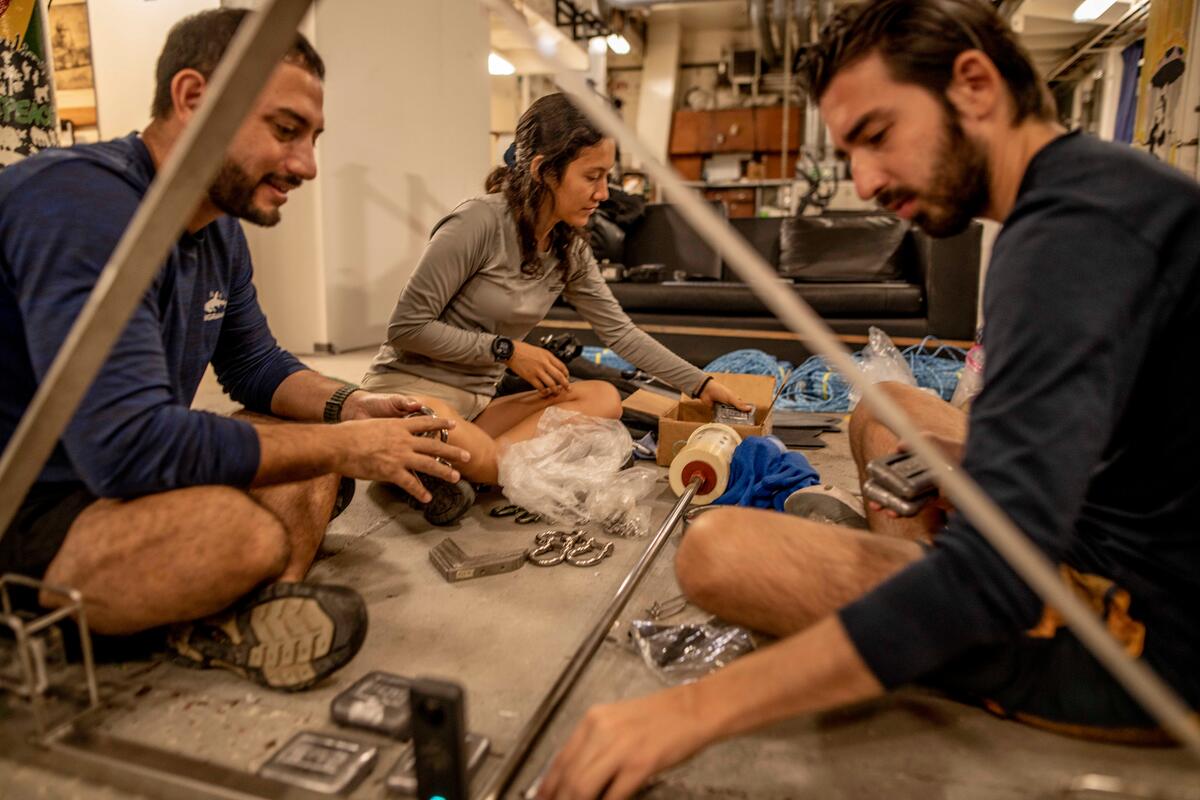
Moments like this always remind us why we need to protect the oceans. Seeing wild marine life freely swimming in their habitat is something to appreciate and be thankful for. In addition, it is important to mention that the High Seas are considered the 'common heritage of humankind', this means that this part of the ocean does not belong to any country but to humanity as a whole, and we need to protect them not only for the present generation but also for the future ones.
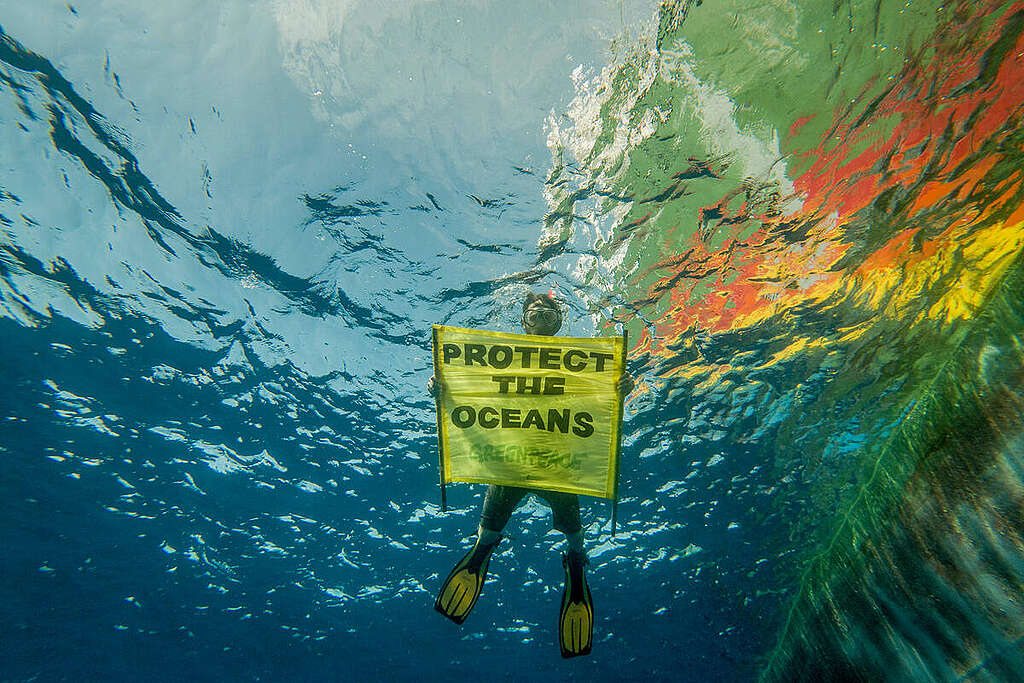
After spending a few days on the High Seas, we continued to make our way to the Galápagos Islands. Our first stop was Puerto Ayora on Santa Cruz Island. As soon as we anchored we received a visit from the national authorities who conducted the regular inspections they make to all ships arriving, to prevent the introduction of foreign plants or animals to the islands and ensure the integrity of their ecosystem.
Seeing blacktip sharks, turtles and marine iguanas swimming near the port was mesmerising, and then finding sea lions lying on the benches and corridors of the passenger terminal was totally unexpected. Clearly living in the middle of such a successful marine reserve makes people have a different relationship with the fauna of the place. You notice this even while walking on the streets, or even looking at the main church where the stained glass was marine fauna themed.
While in Puerto Ayora, more scientists, media and a park ranger joined onboard to start the scientific expedition within the marine reserve. The next four weeks were super busy. The scientists kept taking water samples for eDNA analysis and recording many hours of underwater video using Remotely Operated Vehicles (ROVs) and BRUVs near various seamounts. In the last days of the expedition, there was some work to track sharks to learn more about their migratory patterns and key habitats and show how important it is to have more protected areas on the High Seas as sharks and other species know no borders.
At the end of the expedition, 18 organisations signed a joint statement, calling for the governments of Ecuador, Costa Rica, Panama and Colombia to swiftly ratify the High Seas Treaty. This is an important part of the expedition because civil society played a key role in pushing governments to get the Global Ocean Treaty finally agreed in March 2023, and now that the race for its ratification has started, we must continue to urge governments to ratify the Treaty as soon as possible.
When the scientific expedition started, only Palau had ratified the High Seas Treaty, and in the middle of the expedition Chile followed in their footsteps. Since the scientific expedition finished, only five countries have ratified the Treaty so far (Palau, Chile, Seychelles, Belize and Monaco), out of the 60 needed for the Treaty to enter into force.
It has been almost two months since Greenpeace was in the Galápagos Islands, and this week I travelled to Panama again, this time to participate in an event the Foreign Affairs Ministry in Panama and the High Seas Alliance organised. It might sound strange, but while I was meeting government officials from Panama, Costa Rica, Ecuador and Colombia in the last few days, I felt like I was back in the magical Galápagos. To properly protect the waters around these special islands, we need these governments' action.
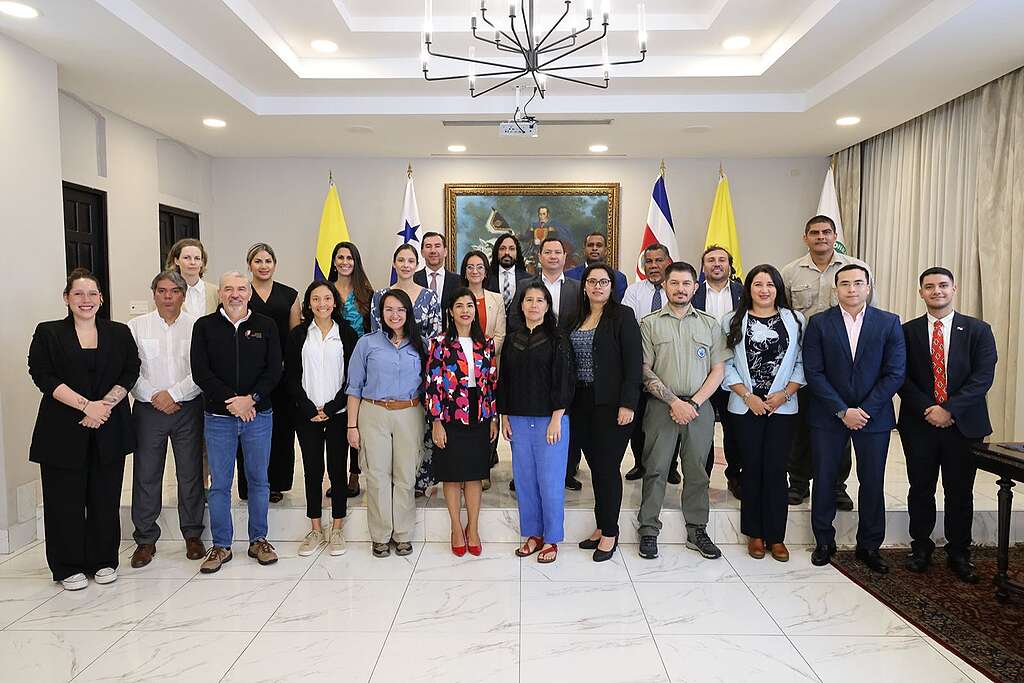
These spaces are important to support governments in their ratification process and also to transmit the urgency of ratifying the Treaty as soon as possible to meet the 30×30 target. In addition, as time is running out and the Treaty seeks to establish a network of MPAs, Greenpeace urges governments to start developing proposals for MPAs on the High Seas and submit them as soon as the Treaty enters into force.
Ruth Ramos is an Oceans Campaigner with Greenpeace International.






